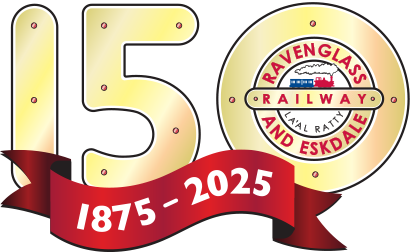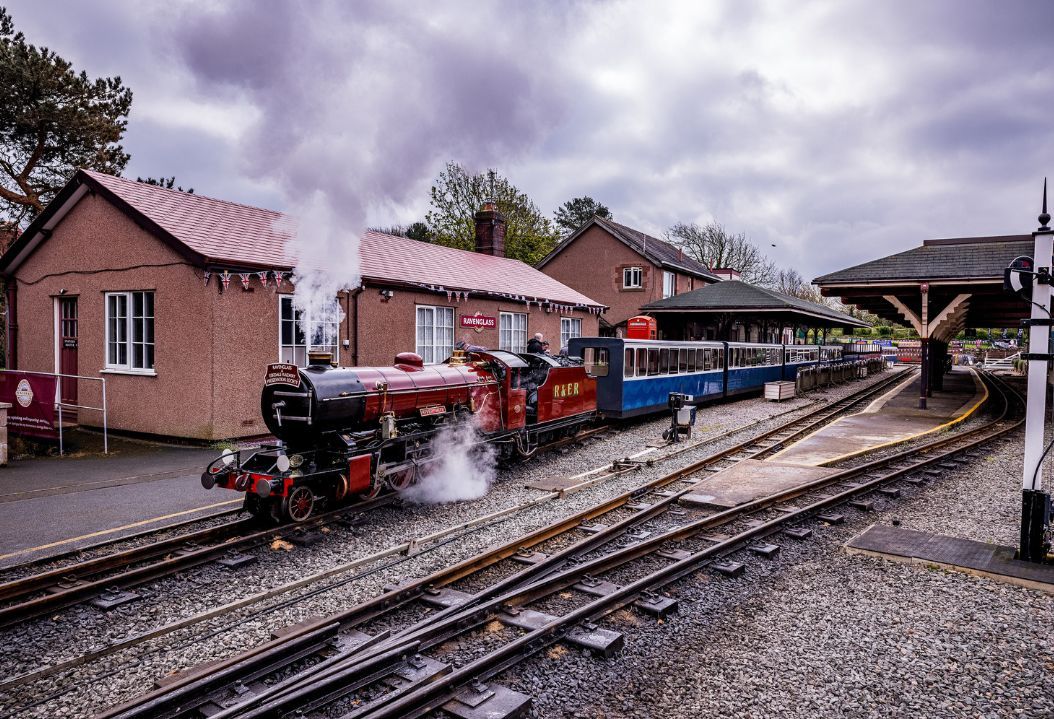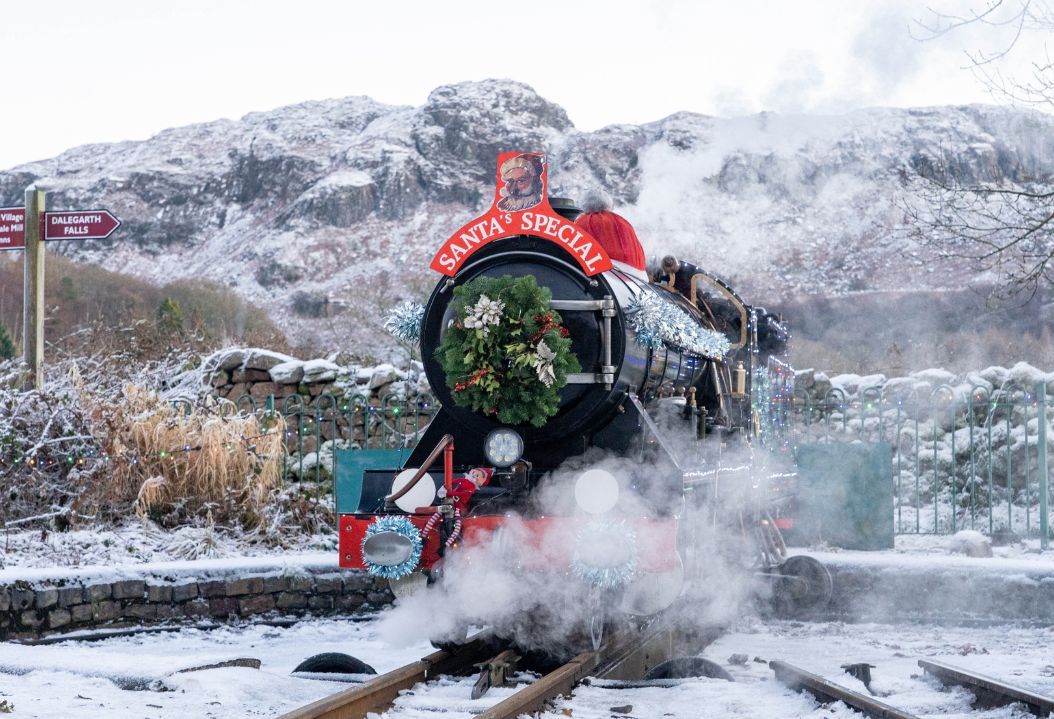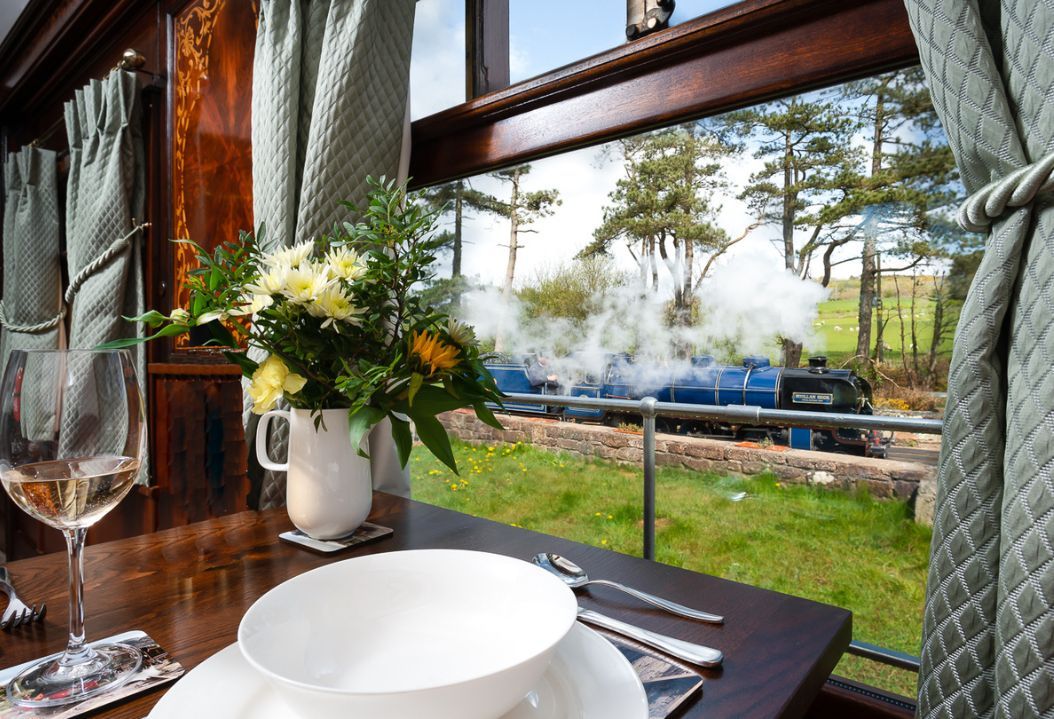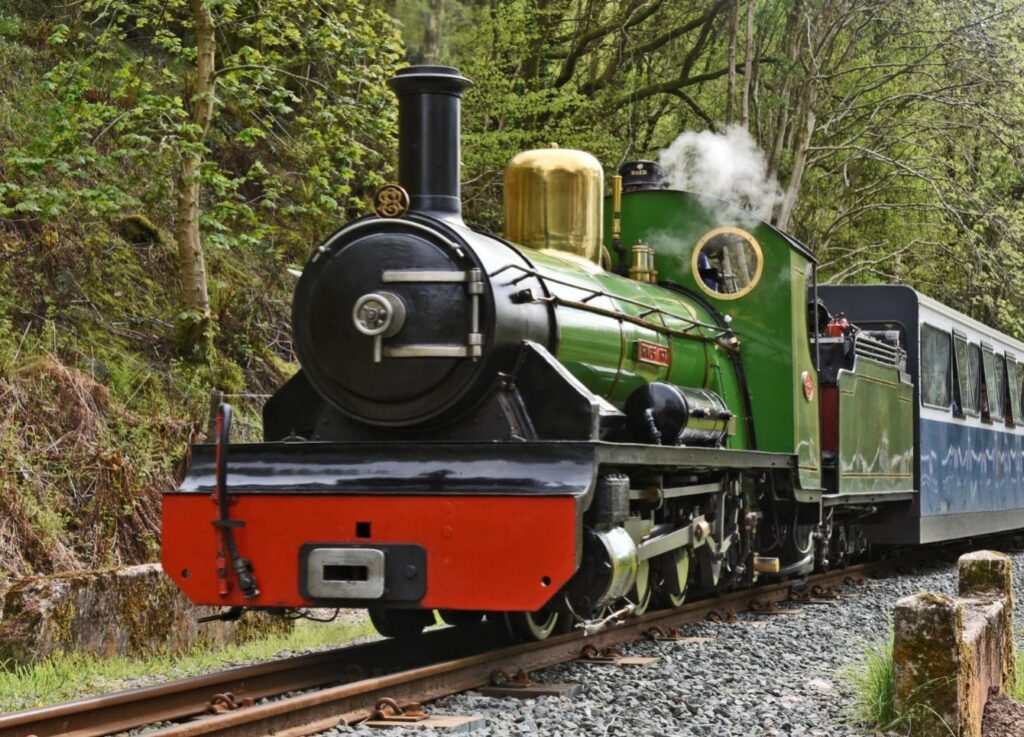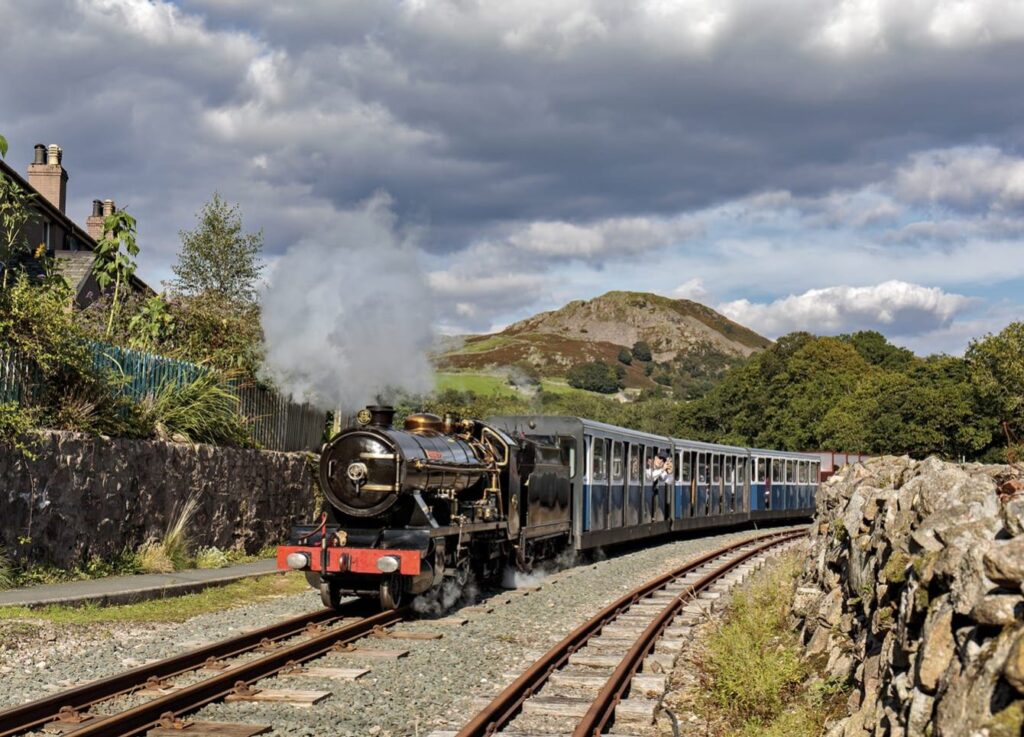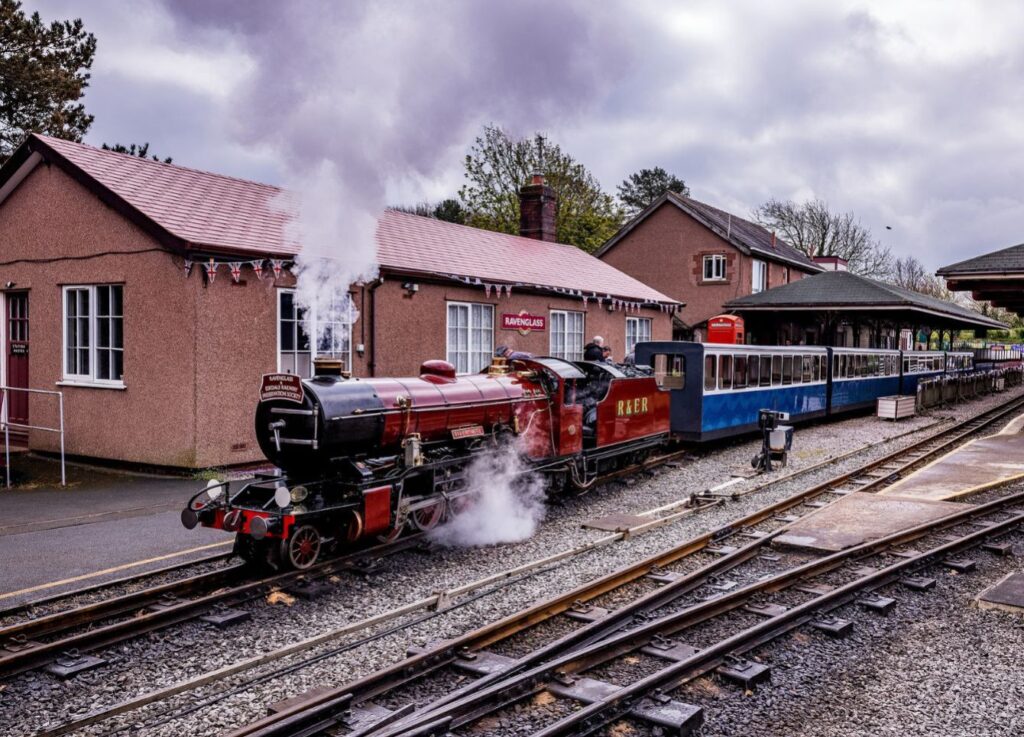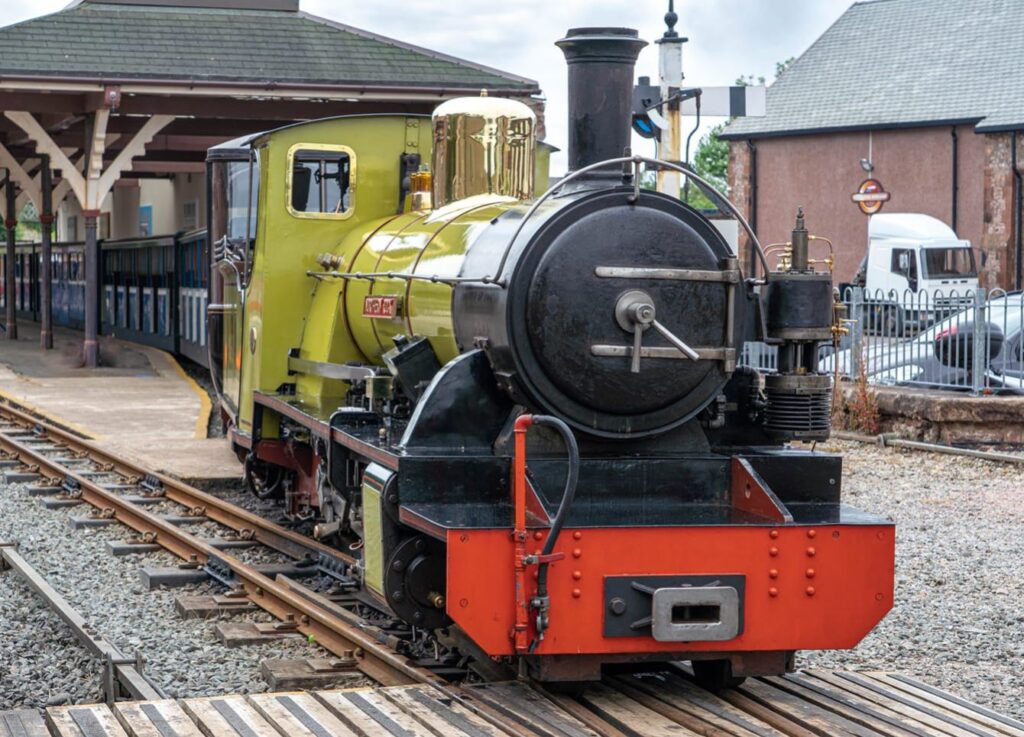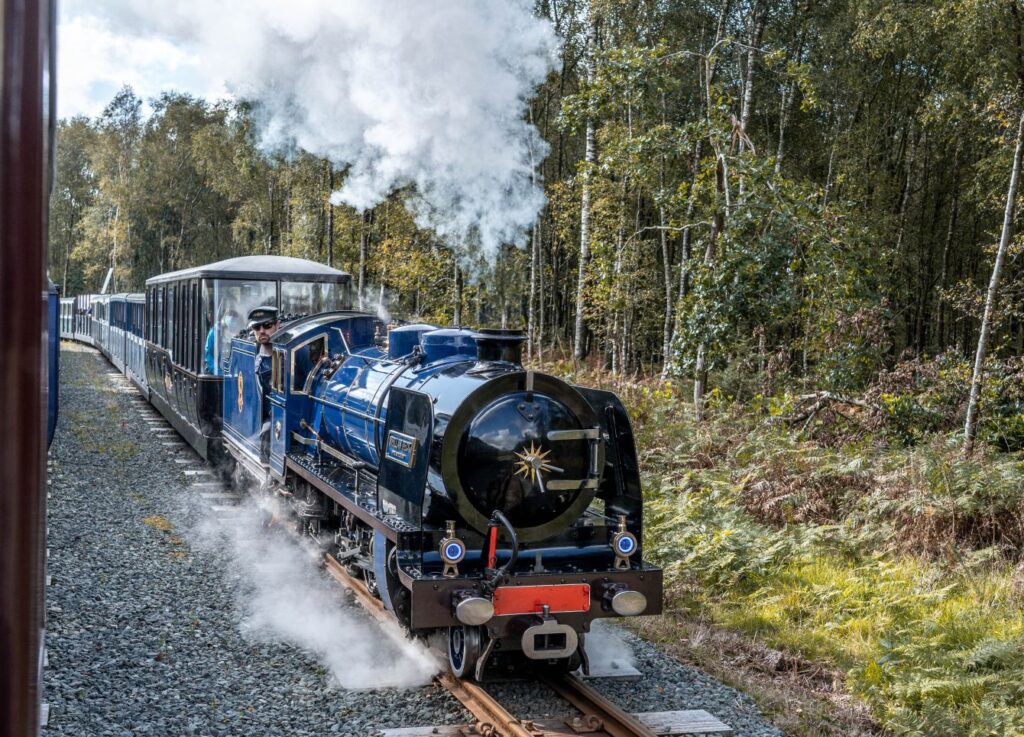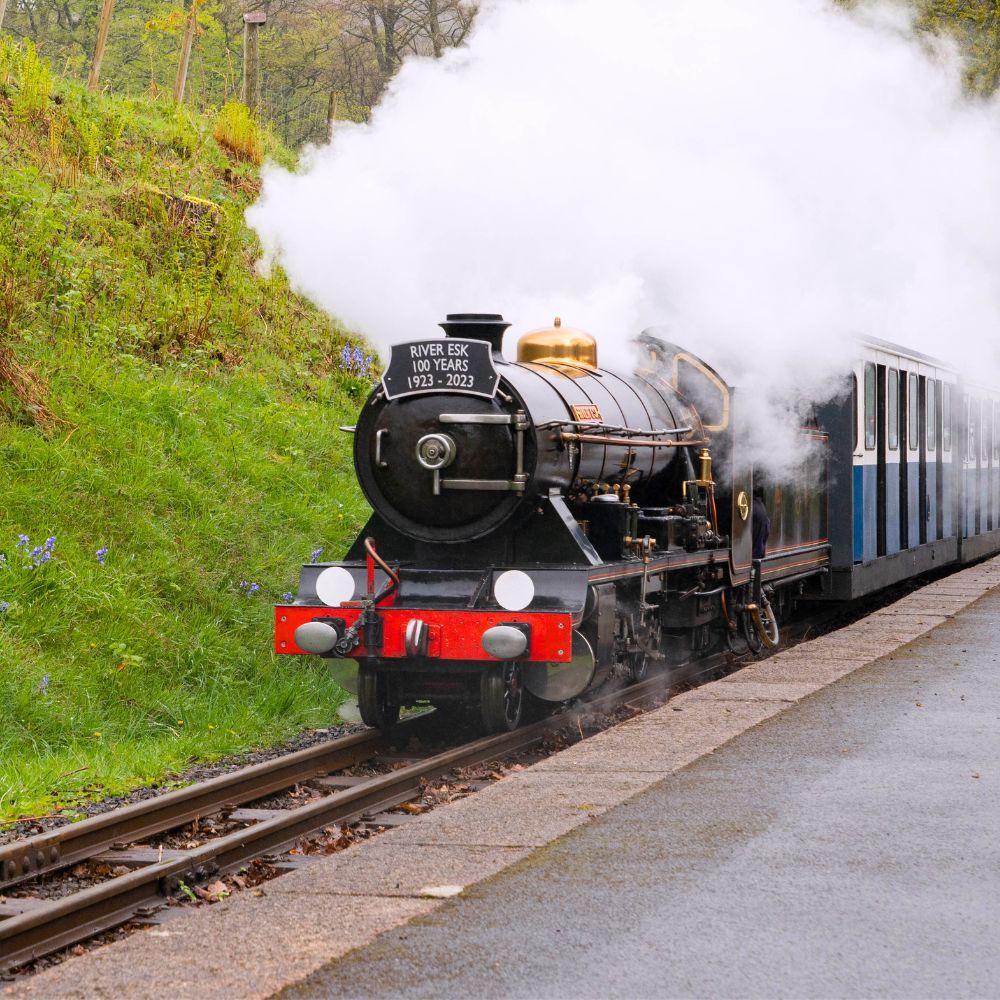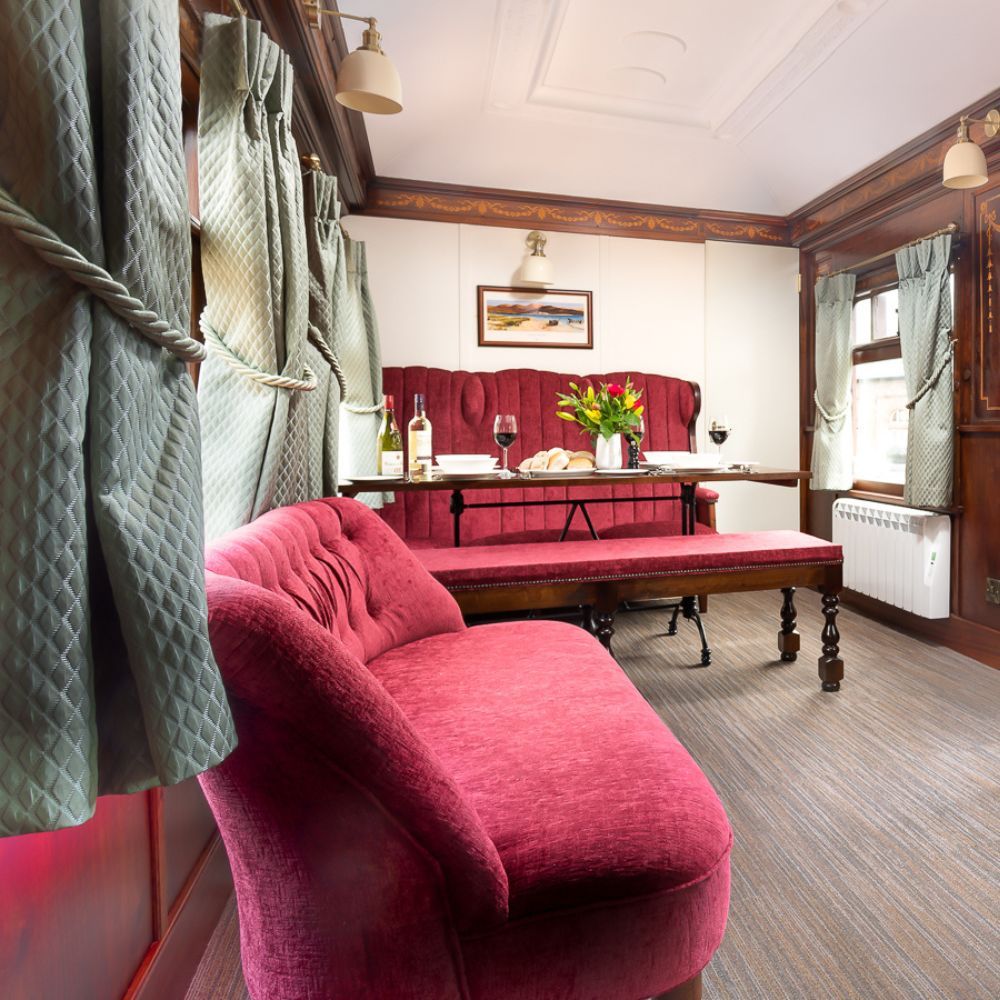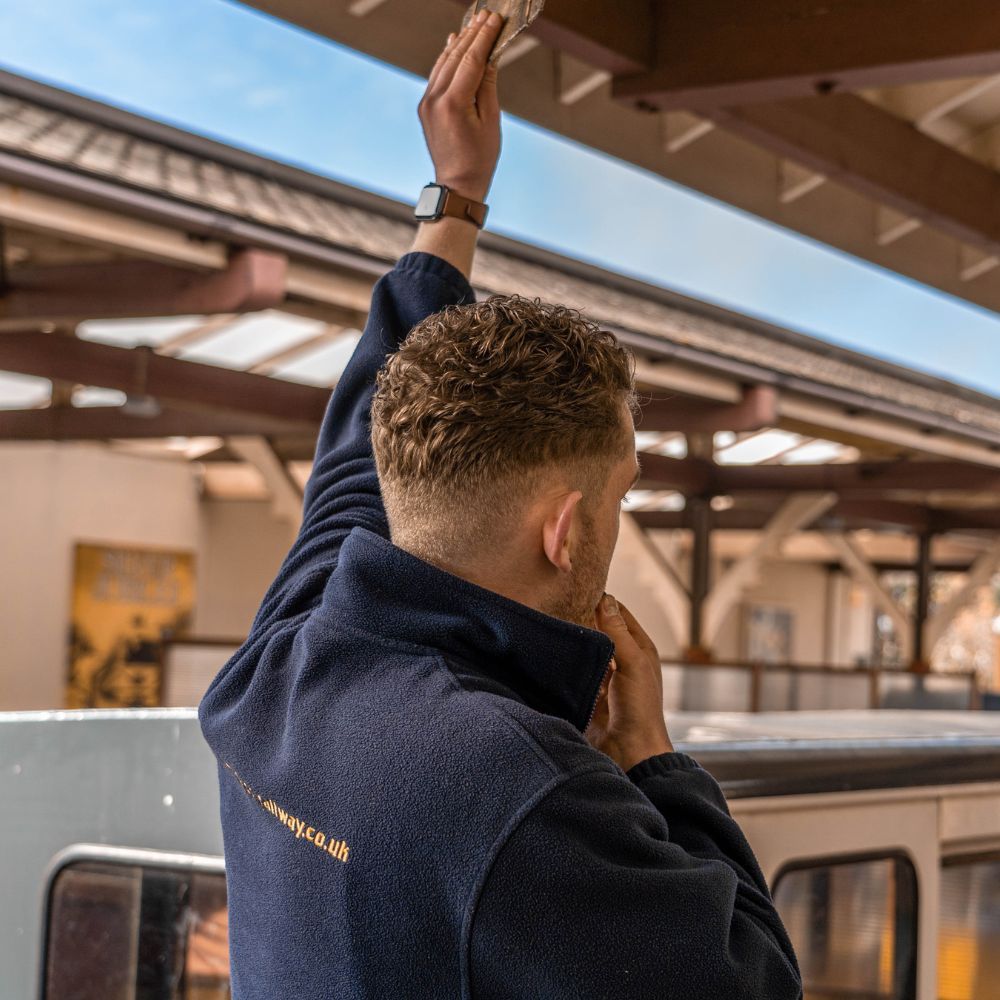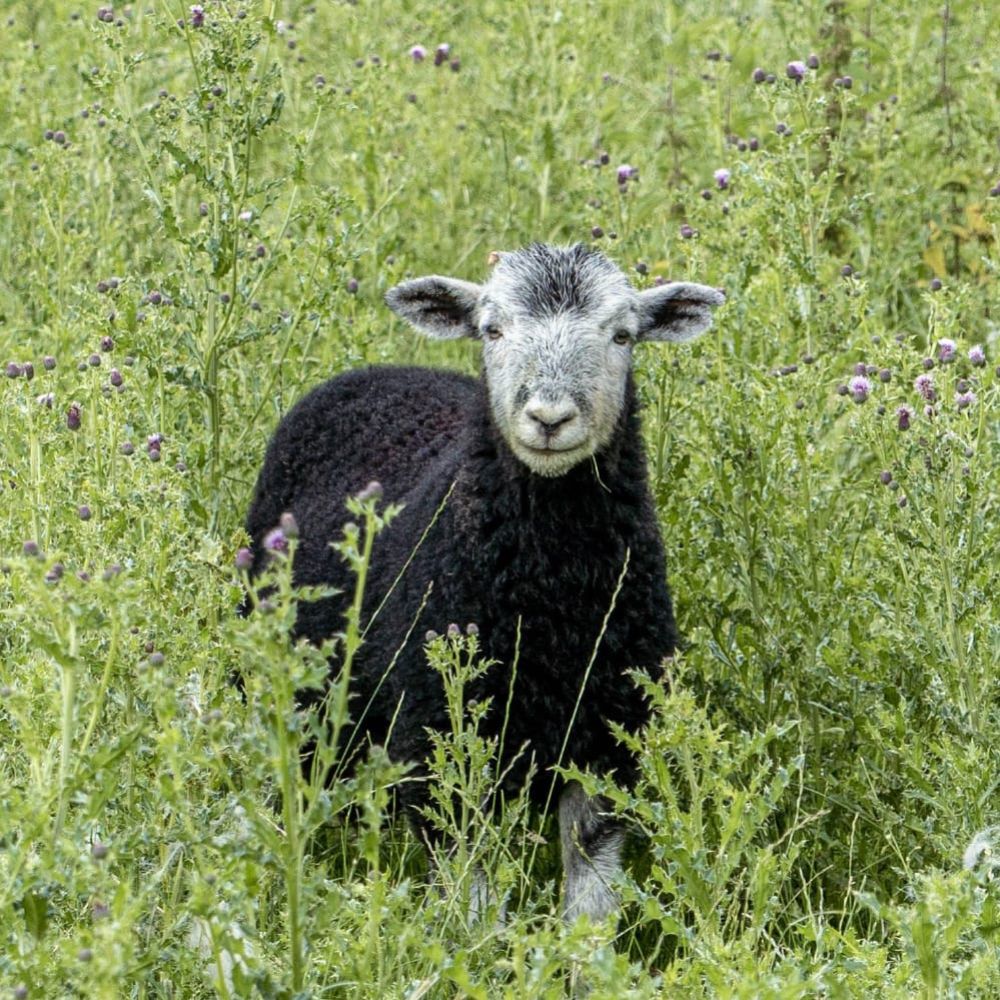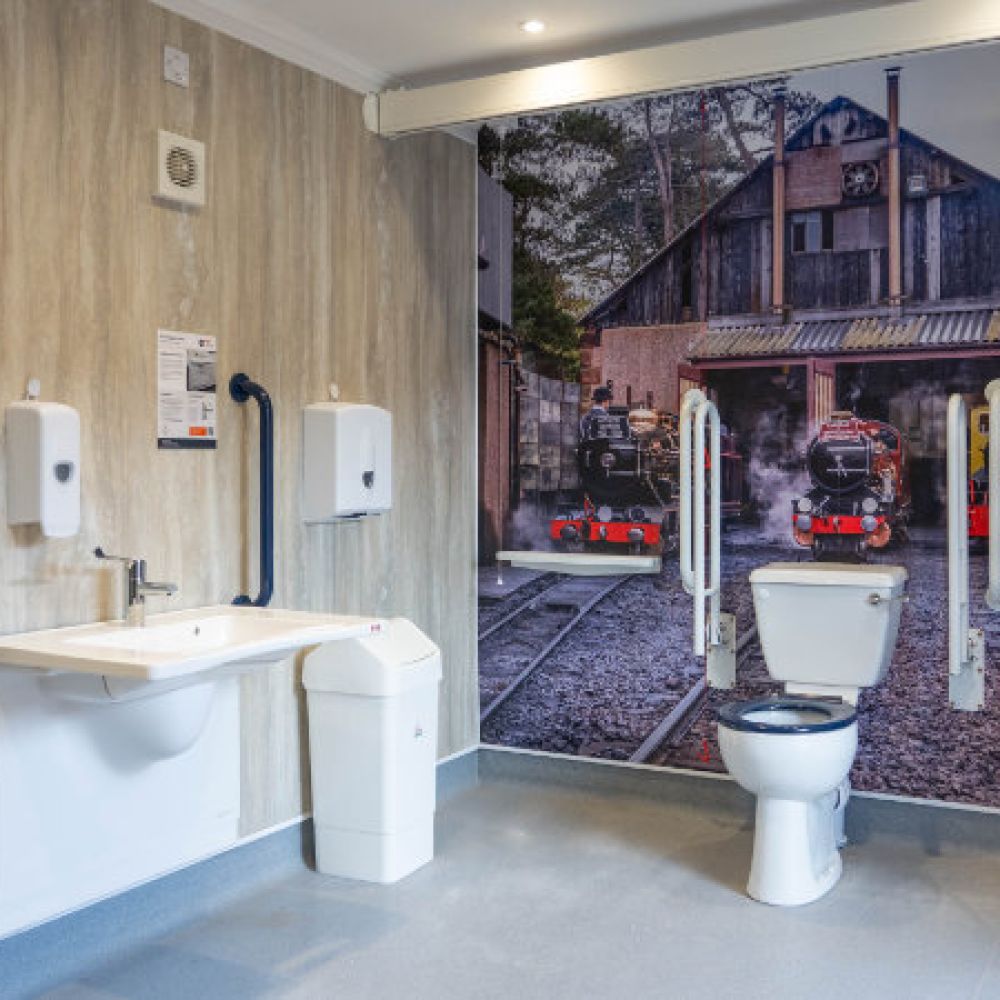Meet the ‘La’al Ratty’
Welcome to the Ravenglass and Eskdale Railway. Join us on a stunning seven-mile journey from Ravenglass, the only coastal village in the UNESCO World Heritage site, The Lake District National Park. Travel across the estuary, through the hills, past seven request stops, en route to our final destination, Dalegarth for Boot station.
Ravenglass Station
Ravenglass is the only coastal village located in two World Heritage sites, Lake District National Park and Frontiers of the Roman Empire.
Station facilities include a viewing turntable, licensed café, gift shop, accessible toilets, a museum with interactive exhibits, children’s activity boxes and an outdoor children’s play area.
Take a ten-minute walk to view Ravenglass Roman Bath House which is known as ‘Walls Castle.’
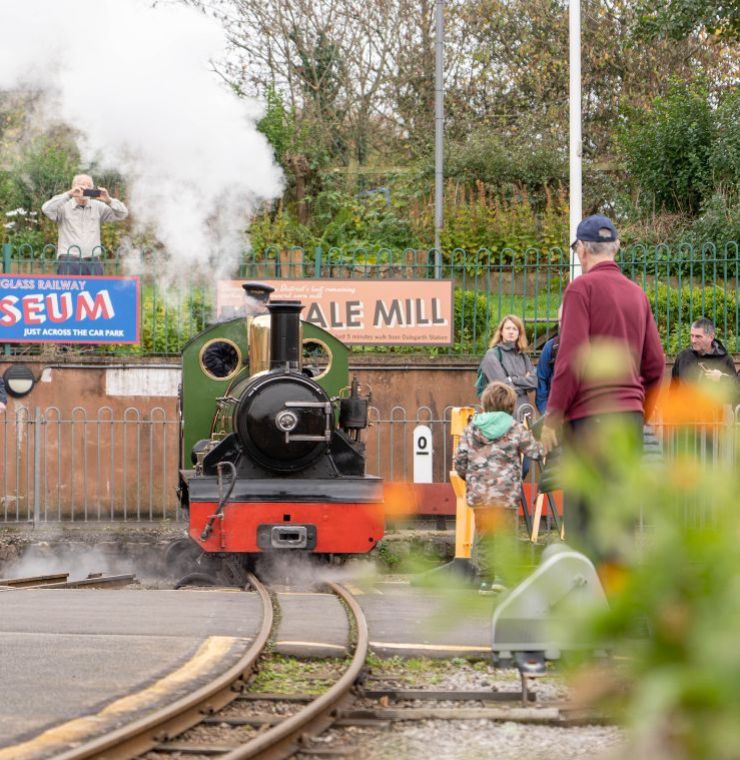
Muncaster Mill
This water-powered corn mill is believed to date back to 1455. It is now a private residence. There are great views over the coastal estuary from here.
Please note this is a request stop but the train will only stop if there is space on board. Please observe station signage. Only single tickets will be available from here – cash only. Please find further information on our FAQ page here
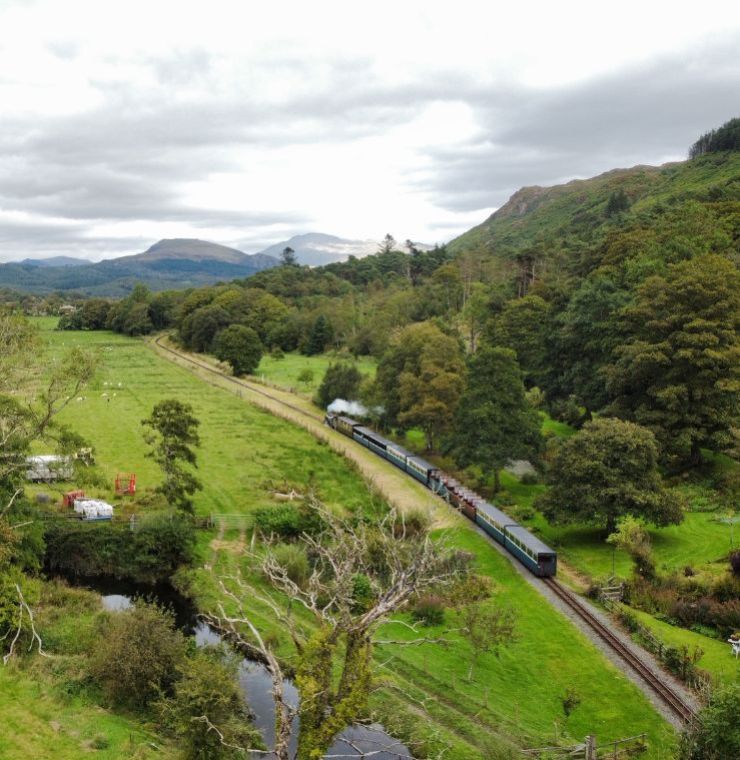
Miteside Halt
This station is referred to as a “halt”. A “halt” in railway parlance is a small station with little or no facilities.
Please note this is a request stop but the train will only stop if there is space on board. Please observe station signage. Only single tickets are available – cash only. Please find further information on our FAQ page here
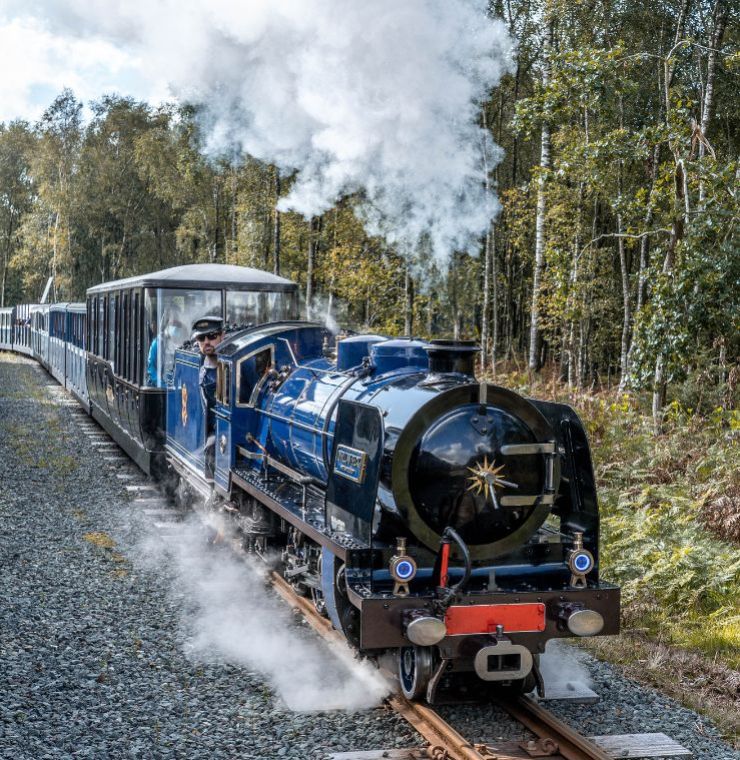
Murthwaite Halt
This station is referred to as a “halt”. A “halt” in railway parlance is a small station with little or no facilities. It once serviced the Murthwaite stone crushing plant, which was formed in the 1920s to crush the granite from the quarries in the valley.
Please note this is a request stop but the train will only stop if there is space on board. Please observe station signage. Only single tickets are available – cash only. Please find further information on our FAQ page here
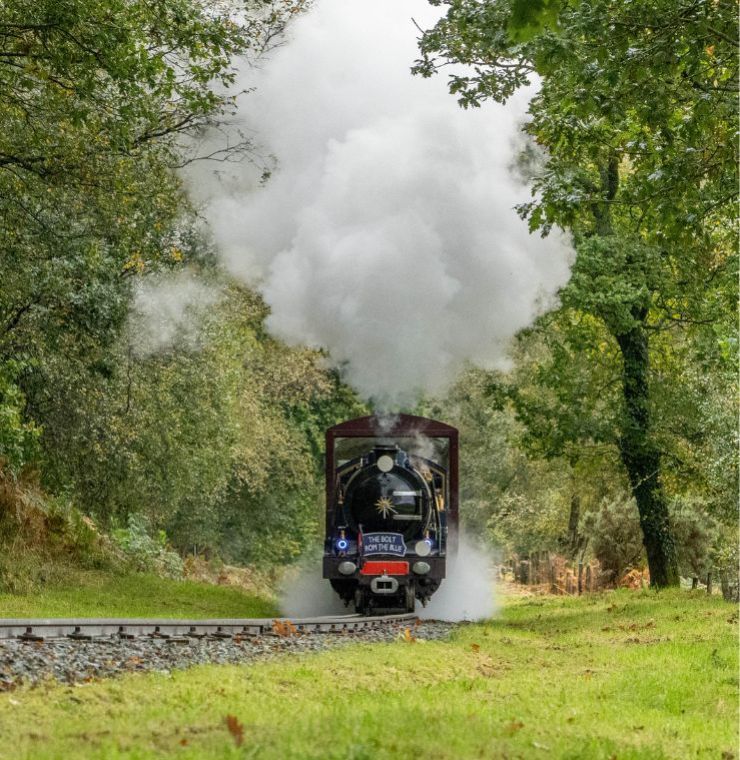
Irton Road
Formerly known as Hollowstones, after a nearby farmstead, the present building dates to 1876. It is the only original station building still in existence constructed from pink granite and red sandstone.
This stop is a popular starting point for two of Wainwright’s walks that start and finish here, including Miterdale. This is a route favoured by Wainwright that takes in one of ‘Lakeland’s sweetest valleys’.
Please note this is a request stop but the train will only stop if there is space on board. Please observe station signage. Only single tickets are available – cash only. Please find further information on our FAQ page here
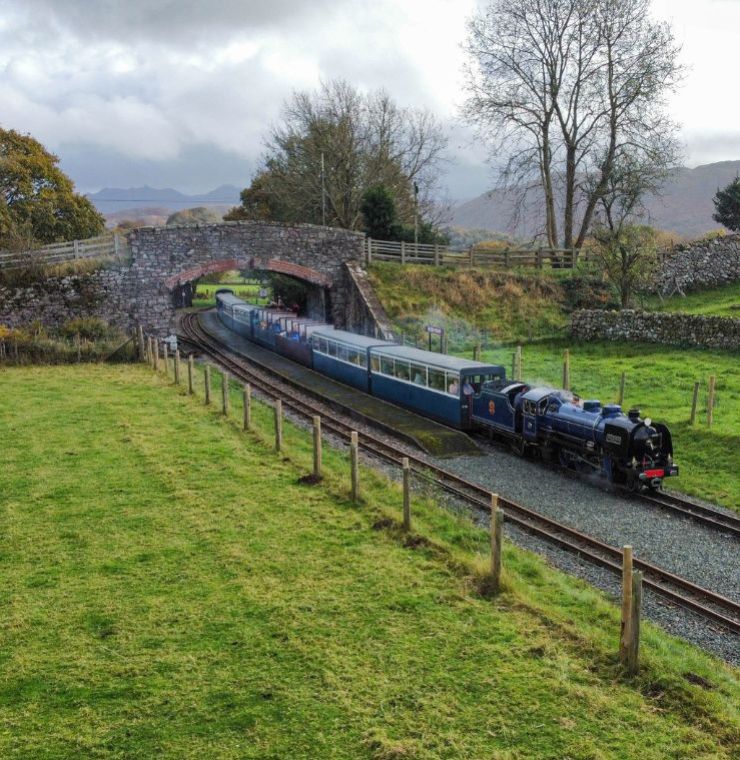
The Green
There are many walks to suit all abilities that start here including Burnmoor Tarn, Scafell, Scafell Pike, and Blea Tarn via Hollin How. This station was first known as King of Prussia but during the First World War, the name was changed to Eskdale Green, now simply known as The Green.
Please note this is a request stop but the train will only stop if there is space on board. Please observe station signage. Only single tickets are available – cash only. Please find further information on our FAQ page here
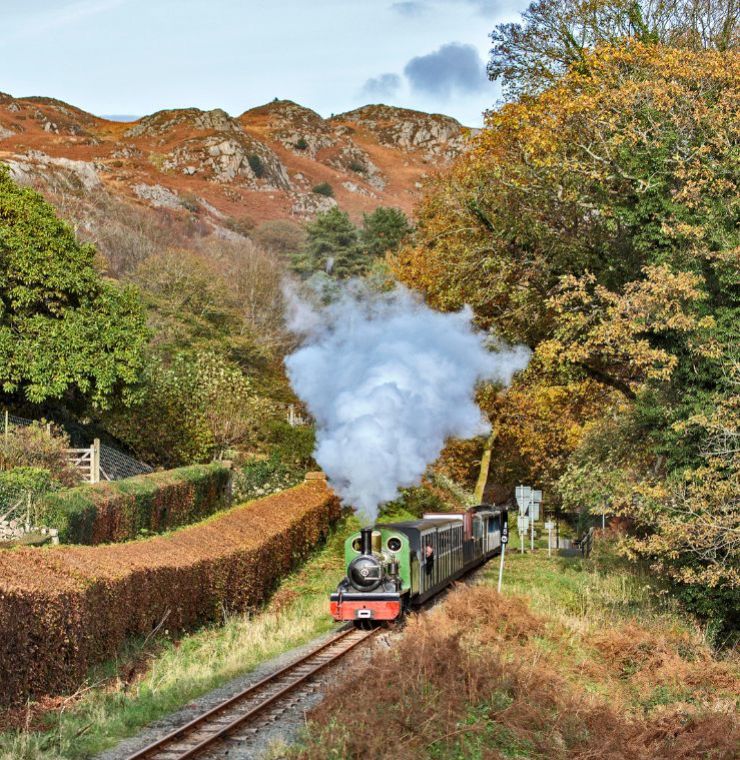
Fisherground Halt
This station is referred to as a “halt”. A “halt” in railway parlance is a small station with little or no facilities. There is a campsite here with excellent facilities for campers and tourers so you can stay a little longer.
Please note this is a request stop but the train will only stop if there is space on board. Please observe station signage. Only single tickets are available – cash only. Please find further information on our FAQ page here
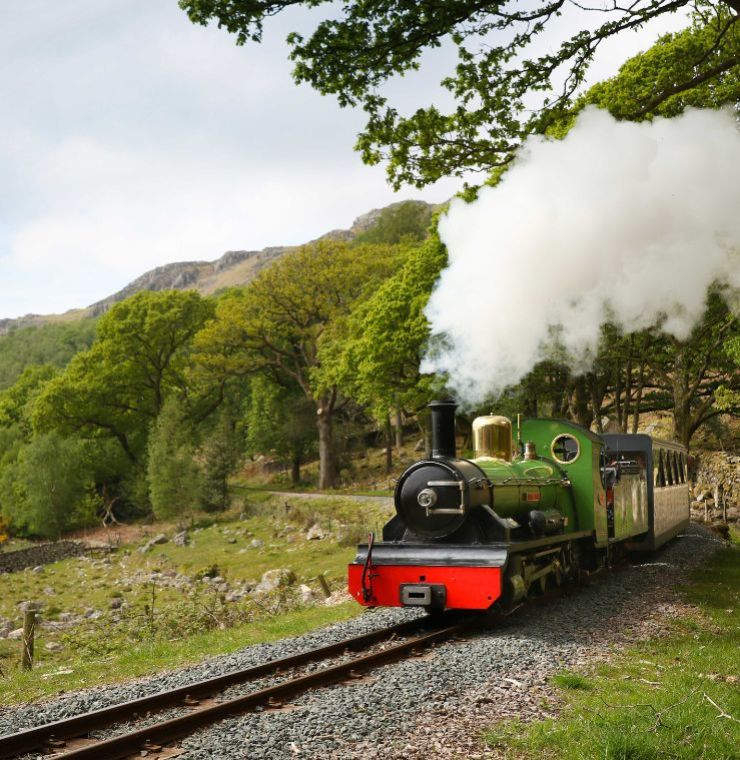
Beckfoot
This station was not part of the original line; it first opened when the railway became a preserved railway in 1960.
Today, it is mainly used by walkers wishing to explore the fells and the exquisite nearby Blea Tarn, one of Wainwright’s “Walks from Ratty”. Blea Tarn nestles on a granite shoulder at an altitude of 217m (712ft) under the slopes of Blea Tarn Hill.
Please note this is a request stop but the train will only stop if there is space on board. Please observe station signage. Only single tickets are available – cash only. Please find further information on our FAQ page here
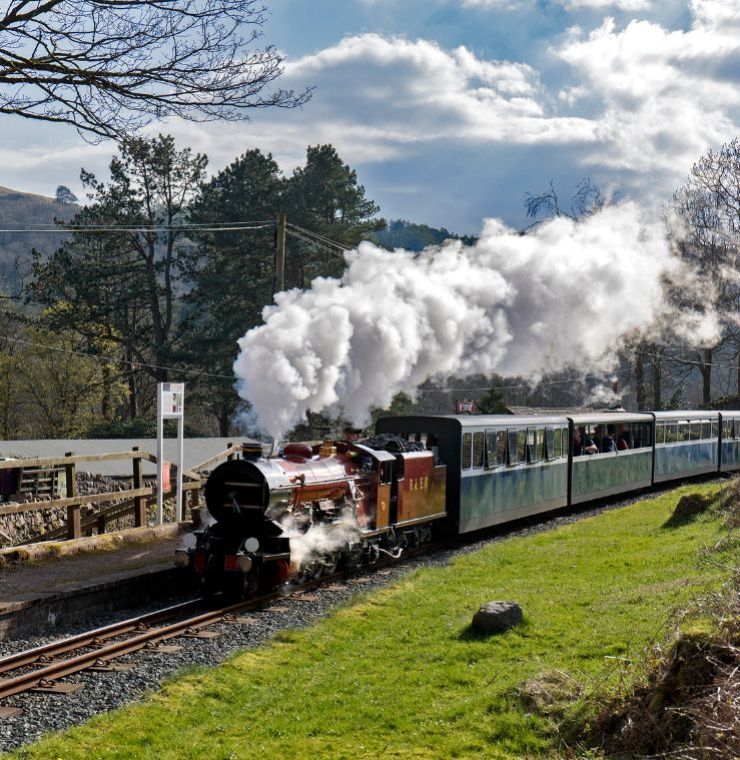
Dalegarth for Boot
The station lies within sight of England’s highest mountains, the Scafell range. It has not always been the terminus of the line, as the railway originally hauled iron ore from Nab Gill Mine. The remains of the rope worked inclined railway can be seen just to the left of the Boot Inn.
It’s just a short walk into the village where you will find the Eskdale Mill. There are plenty of local walks including Stanley Ghyll waterfall.
Station facilities include a viewing turntable, licensed café, gift shop, accessible toilets, and an outdoor children’s play area.
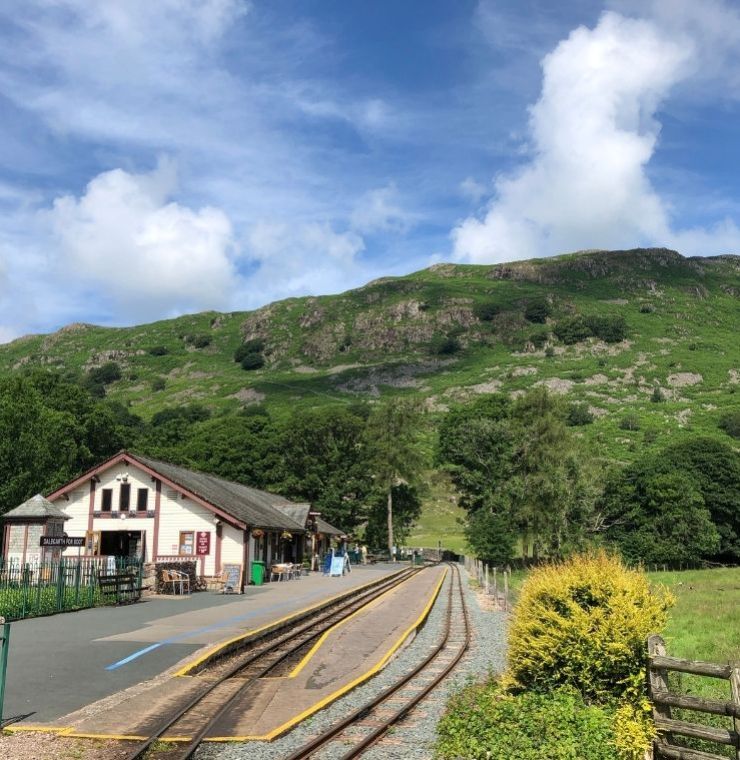
Ravenglass Station
Muncaster Mill
Miteside Halt
Murthwaite Halt
Irton Road
The Green
Fisherground Halt
Beckfoot
Dalegarth for Boot

- Ravenglass Station
- Muncaster Mill
- Miteside Halt
- Murthwaite Halt
- Irton Road
- The Green
- Fisherground Halt
- Beckfoot
- Dalegarth for Boot
Ravenglass Station
Ravenglass is the only coastal village located in two World Heritage sites, Lake District National Park and Frontiers of the Roman Empire.
Station facilities include a viewing turntable, licensed café, gift shop, accessible toilets, a museum with interactive exhibits, children’s activity boxes and an outdoor children’s play area.
Take a ten-minute walk to view Ravenglass Roman Bath House which is known as ‘Walls Castle.’

Muncaster Mill
This water-powered corn mill is believed to date back to 1455. It is now a private residence. There are great views over the coastal estuary from here.
Please note this is a request stop but the train will only stop if there is space on board. Please observe station signage. Only single tickets will be available from here – cash only. Please find further information on our FAQ page here

Miteside Halt
This station is referred to as a “halt”. A “halt” in railway parlance is a small station with little or no facilities.
Please note this is a request stop but the train will only stop if there is space on board. Please observe station signage. Only single tickets are available – cash only. Please find further information on our FAQ page here

Murthwaite Halt
This station is referred to as a “halt”. A “halt” in railway parlance is a small station with little or no facilities. It once serviced the Murthwaite stone crushing plant, which was formed in the 1920s to crush the granite from the quarries in the valley.
Please note this is a request stop but the train will only stop if there is space on board. Please observe station signage. Only single tickets are available – cash only. Please find further information on our FAQ page here

Irton Road
Formerly known as Hollowstones, after a nearby farmstead, the present building dates to 1876. It is the only original station building still in existence constructed from pink granite and red sandstone.
This stop is a popular starting point for two of Wainwright’s walks that start and finish here, including Miterdale. This is a route favoured by Wainwright that takes in one of ‘Lakeland’s sweetest valleys’.
Please note this is a request stop but the train will only stop if there is space on board. Please observe station signage. Only single tickets are available – cash only. Please find further information on our FAQ page here

The Green
There are many walks to suit all abilities that start here including Burnmoor Tarn, Scafell, Scafell Pike, and Blea Tarn via Hollin How. This station was first known as King of Prussia but during the First World War, the name was changed to Eskdale Green, now simply known as The Green.
Please note this is a request stop but the train will only stop if there is space on board. Please observe station signage. Only single tickets are available – cash only. Please find further information on our FAQ page here

Fisherground Halt
This station is referred to as a “halt”. A “halt” in railway parlance is a small station with little or no facilities. There is a campsite here with excellent facilities for campers and tourers so you can stay a little longer.
Please note this is a request stop but the train will only stop if there is space on board. Please observe station signage. Only single tickets are available – cash only. Please find further information on our FAQ page here

Beckfoot
This station was not part of the original line; it first opened when the railway became a preserved railway in 1960.
Today, it is mainly used by walkers wishing to explore the fells and the exquisite nearby Blea Tarn, one of Wainwright’s “Walks from Ratty”. Blea Tarn nestles on a granite shoulder at an altitude of 217m (712ft) under the slopes of Blea Tarn Hill.
Please note this is a request stop but the train will only stop if there is space on board. Please observe station signage. Only single tickets are available – cash only. Please find further information on our FAQ page here

Dalegarth for Boot
The station lies within sight of England’s highest mountains, the Scafell range. It has not always been the terminus of the line, as the railway originally hauled iron ore from Nab Gill Mine. The remains of the rope worked inclined railway can be seen just to the left of the Boot Inn.
It’s just a short walk into the village where you will find the Eskdale Mill. There are plenty of local walks including Stanley Ghyll waterfall.
Station facilities include a viewing turntable, licensed café, gift shop, accessible toilets, and an outdoor children’s play area.

